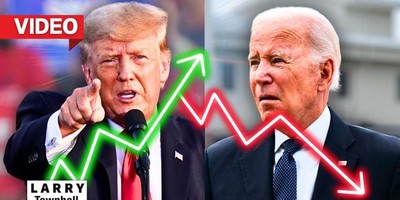When executives of a company step in and buy its stock, it can provide a glimpse into an overlooked or misunderstood value opportunity.
Sadly, these insiders are often lousy market timers. They tend to acquire shares after a stock has lost a lot of value (even as they think the company's operating outlook remains bright). In many instances, the selling pressure isn't yet finished, and these insiders simply jumped in too soon. The good news: you can profit from their bad timing by picking up shares at lower prices than what insiders paid for them.
You can find a clear example of this with advertising firm MDC Partners (Nasdaq: MDCA), which is a member of my $100,000 Real-money Portfolio. Insiders have been buying this stock for an extended period, even as it has drifted ever-lower.
.png)
I think this stock is a deep bargain for its own intrinsic reasons, and those rounds of insider buying at much higher levels give me that much more confidence.
Here are three other attractively-valued stocks that are now much cheaper than what insiders paid for them.
 1. Halozyme Therapeutics (Nasdaq: HALO)
1. Halozyme Therapeutics (Nasdaq: HALO)
I wrote about this stock in mid-April right after it was crushed. Halozyme is pursuing a range of drug-development opportunities with major pharmaceutical firms, so the recent pullback could present a solid buying opportunity.
Randal Kirk, who usually knows when to buy low and sell high, had been buying all the way. He picked up stock last summer when it was trading at $6, then in November 2011 when it moved up to $8, and then made his largest purchase yet (1.36 million shares) when the stock had moved past $10 in February. Shares are now right back at $8, though as I mentioned a few weeks ago, it's far too soon to write this company off.
2. Titanium Metals (NYSE: TIE)
Harold Simmons has never been shy about spending large sums of money to gain control of companies. He's now chairman of Valhi (NYSE: VHI), NL Industries (NYSE: NL), Kronos Worldwide (NYSE: KRO) and Titanium Metals. That's the title they give you when you own a lot of company stock. In the past two years, he's been a steady buyer of all four companies, boosting his stakes even more.
Recommended
Only Titanium Minerals has been a losing recent investment for him. He started buying in late 2010 when shares were trading above $17. He bought hundreds of thousands more shares at that price last spring, when shares were stuck in the $17 range. By the time shares fell below $17 last June, he was still buying. And he's been buying ever since, even though shares are now around $14.50.
Why is Simmons so keen to own millions of shares of Titanium Metals? Because he knows the commodity plays a key role in the generation of fuel-efficient airplanes. And though global titanium production is fairly constant, demand is set to rise. "Aircraft build rates provide visibility on a likely titanium market tightening in [2013]. Investors may be wary of titanium stocks following multi-year 787 and A380 delays, but accelerating deliveries of these planes should be a catalyst for specialty metals stocks," note analysts at Citigroup.
They add that because the company mills raw titanium and then modifies it into key shapes for customers, it can maintain low costs and high profit spreads. That's why "TIE has significant leverage to anticipated demand growth and the highest projected EBITDA margins of the group," (that also includes RTI International Metals (NYSE: RTI), Carpenter Technology (NYSE: CRS) and Allegheny Technologies (NYSE: ATI).)
Citigroup's analysts have a current $17 price target but note further upside if the global economy and titanium demand get stronger. This stock, currently trading around $14.50, hit $35 back in 2007 when industry conditions were aligned. Harold Simmons is well aware of that as he continues to but this stock at ever-lower levels.
3. Pizza Inn Holdings (Nasdaq: PZZI)
This Texas-based restaurant chain has been a sleepy operator of eponymously-named pizzerias. During the past year, management has been seeking to boost results by trying out a new style of eatery called Pie Five Pizza. The twist: this chain offers a range of toppings and crusts and will have your food in front of you in five minutes. The half-dozen Pie Five stores have delivered fairly solid early returns in terms of sales and profits, though they still constitute just a fraction of the total store base.
More importantly, insiders jumped the gun. They bought more than $80,000 worth of stock during the winter at an average price of around $5 a share. Shares have dropped 30% since then, pushing the stock even deeper into micro-cap territory. It's unclear if the Pie Five concept will succeed, but at least investors are now paying a lot less to find out.
Risks to Consider: These stocks have stumbled after insiders were bullish, so it pays to deeply research what has transpired since to ensure that the insider-induced investment thesis still applies.
Action to Take --> Many stocks move higher after insiders file their transactions with the Securities and Exchange Commission. It often pays to let the insider-inspired bump pass and see if shares pull back. Indeed, it's rarely wise to pay more for a stock than insiders did, as they may end up being sellers by the time you're ready to buy. Conversely, when shares slump after insiders buy, your purchase may be followed by more buying from those insiders. You may find that following this path for any of the three stocks I mentioned above pays off with substantial gains.
[Note: Be sure not to miss a single thing and have $100,000 Portfolio updates sent to your email inbox, free for a limited time, as soon as they're published by signing up here.]

























Join the conversation as a VIP Member